Ultimate Guide on How to Clean Roof Shingles Safely and Effectively
Need to clean your roof shingles but you're worried about potential damage? Our guide cuts right to the chase, offering safe and practical steps to tackle moss, lichen, algae, and stubborn rooftop stains. Discover how to clean your shingles efficiently using the appropriate solutions, equipment, and safety precautions, ensuring your roof’s longevity and curb appeal.
Key Takeaways
Always prioritize safety and preparation before starting a roof cleaning project, such as using the right protective gear and ensuring proper weather conditions.
Choose the appropriate cleaning solution based on the type of stains and your environmental considerations, from eco-friendly vinegar solutions to more robust bleach-based mixtures or alternative cleaning agents.
Maintain your roof through regular inspections and cleanings, installing preventative strips, and keeping gutters clear, but engage professionals when faced with persistent issues or to prevent potential damage.
Preparation and Safety Measures
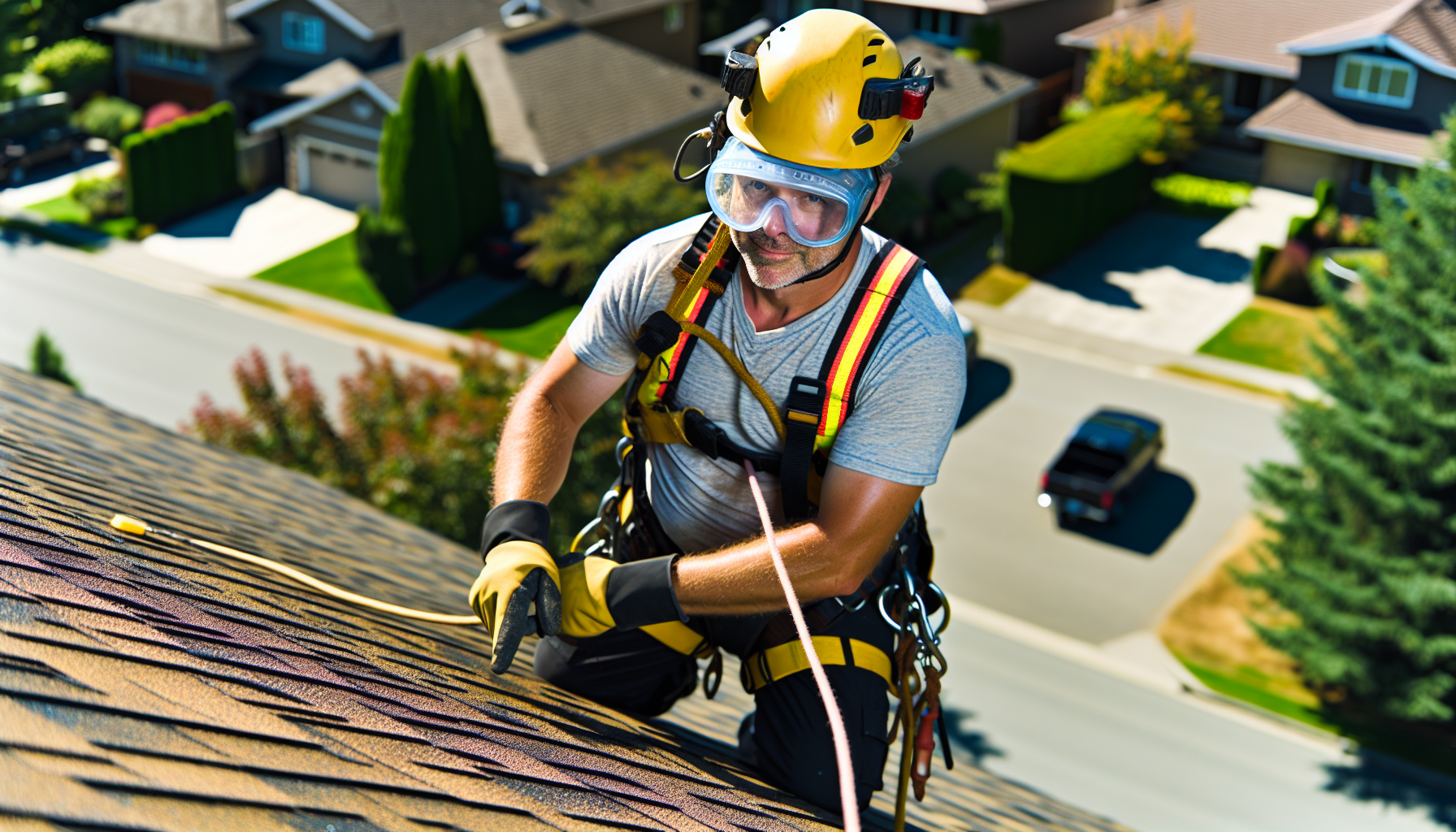
Starting a do-it-yourself project for cleaning your roof may initially appear intimidating. With meticulous preparation and adherence to appropriate safety protocols, the task can prove to be beneficial. Ensuring you take all necessary safety steps before beginning is critical in preventing any injuries or harm to your home. Always prioritize safety!
Before climbing up that ladder, it’s important to assess several factors such as:
How easy it is to get on the roof
The specific roofing materials involved
The steepness of your roof and how slippery it is
The height of the structure
Your level of comfort when working on ladders and rooftops
Selecting an adequate chemical solution that won’t damage the roof while also preserving nearby flora is vital. Having taken these key points into account ensures you’re equipped with knowledge about how to proceed securely with roof cleaning!
Weather Conditions and Timing
Selecting the optimal day for your roof cleaning task is crucial to achieving outstanding outcomes. The role of weather conditions in this endeavor cannot be overstated. Aim for a day that is above freezing for a minimum of four hours, which helps avoid the formation of ice and guarantees that cleaning agents function efficiently.
For ideal results, undertaking roof cleaning on an overcast day is recommended because it prevents the rapid drying and evaporation of cleaning solutions, ensuring a more comprehensive removal process when dealing with moss, lichen, and algae.
Protective Gear and Equipment
Ensuring that you are properly protected is a critical element of the roof cleaning process. Safety takes precedence when you’re performing tasks at elevated levels. It’s essential to equip yourself with:
A tightly secured safety harness
Shoes designed to resist slipping
Protective gloves
Goggles or other forms of eye protection
By following these important safety precautions, you can minimize the risk of falls and injuries while undertaking your roof cleaning task, leading to both a safe and effective project completion.
Protecting Nearby Plants and Features
Before you start cleaning your roof, don't forget about your plants and decorations nearby. It's a good idea to give them some water and cover them up with some plastic to keep them safe from any cleaning products you're using.
After you've finished cleaning, give those plants another good watering. This helps wash away any leftover chemicals that might have dripped down. A little extra care goes a long way in keeping your garden happy and healthy while you get your roof sparkling clean.
Choosing the Right Cleaning Solution
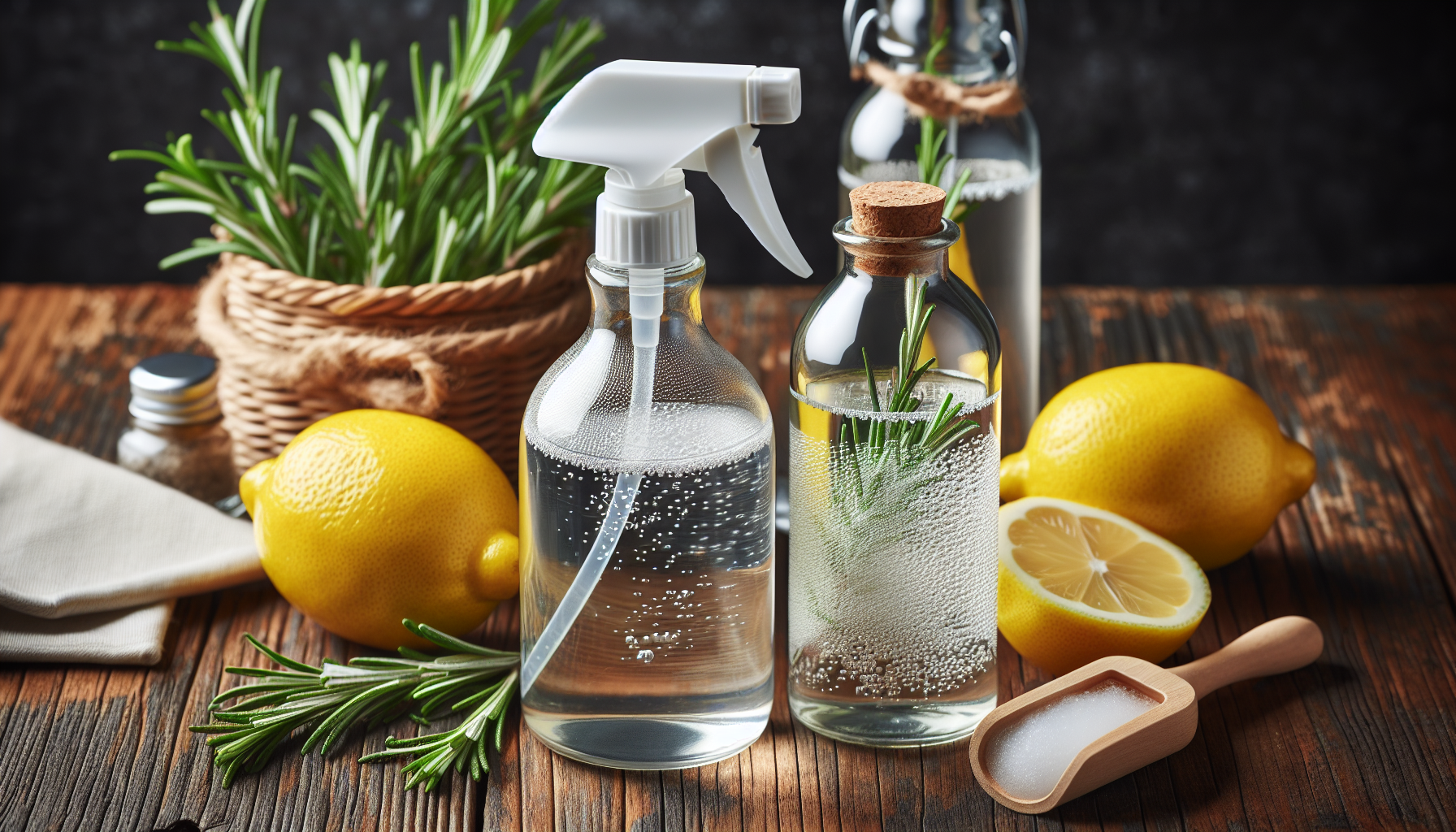
Let’s focus on selecting an appropriate cleaning solution, a critical factor in determining the success of your roof cleaning efforts. A wide array of choices is available from eco-conscious formulations to potent bleach-based solutions.
For those who prioritize environmental stewardship, options such as a simple mixture of white vinegar and water can serve as an effective way to clean asphalt shingles without resorting to harsh chemicals. On the other hand, for challenging issues like persistent moss, lichen, or algae accumulation, you may find that using a standard chlorine bleach mixed with water provides more satisfactory results.
Should you wish to avoid using bleach entirely, alternative cleaners are at your disposal—such as oxygenated bleach or trisodium phosphate—that are gentler on both the senses and surroundings while still adequately maintaining cleanliness for roof shingles. The decision should ultimately reflect both your specific roofing concerns and personal inclination toward certain types of cleaning solutions.
Environmentally Friendly Solutions
For those determined to reduce their ecological footprint, there are multiple green alternatives available for cleaning asphalt shingles. Utilizing a mixture of white vinegar and water is a natural approach that can successfully clean shingles, while a diluted solution comprising one part hydrogen peroxide to five parts water can effectively eliminate black streaks from the roof. These non-damaging and eco-conscious options not only safeguard the surrounding plant life but also extend the durability of your roof’s shingles.
Bleach-Based Solutions
Homeowners facing tough stains may find that a solution based on bleach is the most effective option. Combining equal parts of standard chlorine bleach and water can clean shingles on your roof effectively, while not inflicting harm. This potent mixture excels at removing:
mold
moss
mildew
algae
lichen
It’s highly successful for many types of outdoor cleaning tasks. It’s imperative to thoroughly wash off this mix to avoid letting it dry on the shingles which might lead to unpleasant smells.
Employed properly, solutions with a base of chlorine bleach can rejuvenate your roof’s shingles and return them to their original condition.
Step-by-Step Guide to Cleaning Roof Shingles
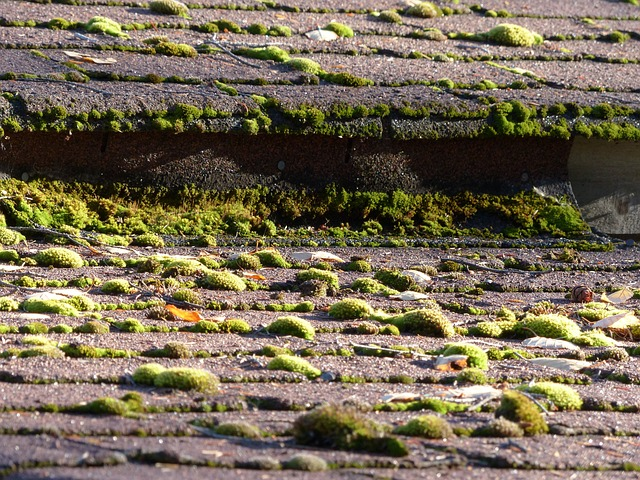
When embarking on the task of cleaning your asphalt shingle roof, it’s imperative to start with a systematic approach that simplifies the procedure.
Initiate by sweeping off all loose dirt, dust, foliage, twigs, and additional debris from the surface using either a push broom or leaf blower. This preliminary step is crucial as it allows for unhindered contact between the cleaning solution and the entire roof area when applied, which facilitates optimal cleansing efficacy. Ensure this initial clean is comprehensive prior to introducing any liquid solutions. Take your time on this step.
Proceeding forward involves evenly spreading your selected cleaning agent across every section of your asphalt roof using either a sprayer or a gentle brush. Always commence at the top of the ridges and work downwards uniformly to address each part while avoiding damage to shingles.
Note that if you see a lot of granules coming loose from your asphalt shingle roof, take it as a sign that your roof may be past its prime useful life. It's best to stop work now and have us come out for a free inspection to assess your roof properly.
After allowing enough time for the active ingredients within your chosen solution to take effect, carry out soft scrubbing over the rooftop using an appropriate soft bristle brush. If persistent spots persist, they may necessitate the application of cleaner followed by repeat brushing sessions until satisfied with the cleanliness levels achieved through these efforts.
Note that in Idaho we typically see tree branches and leaves (mulch) bunched up on roofs. We don't see algae growth, but we certainly see lichen and moss. Typically any growth comes from existing organic material (leaves and branches) that accumulates, soaks up water, and allows moss or lichen to start growing.
Last, finish with an exhaustive rinse-off stage to wash away all traces of leftover cleanser thus revealing freshly cleaned shingles. Now pop into your attic for signs of leaks after this rinse.
Applying the Cleaning Solution
Utilizing a sprayer connected to a garden hose is an effective strategy for administering the cleaning solution on your roof. By adopting this method, you will be able to:
Swiftly and uniformly coat expansive areas
Proceed from the highest point of the roof towards the lower sections
Guarantee that every part of the roof receives an even distribution of the cleaning agent.
It’s important to allow ample time for drying after applying the solution completely across your entire roof before determining whether another layer is needed to deal with persistent moss, lichen, and algae.
Gently Scrubbing Stubborn Stains
Once you have administered the cleaning solution, proceed with caution to softly scrub the roof. Employ a soft bristle brush for dislodging persistent stains and organic buildup while ensuring that no harm comes to the shingles on your roof. Should there be spots rife with hardened grime or resilient stains, feel free to apply additional cleaning solution prior to commencing with scrubbing.
It is imperative that during this process, gentle handling is maintained so as not to inflict any damage upon the roofing materials. You do not want the asphalt granules to come off.
Rinsing the Roof
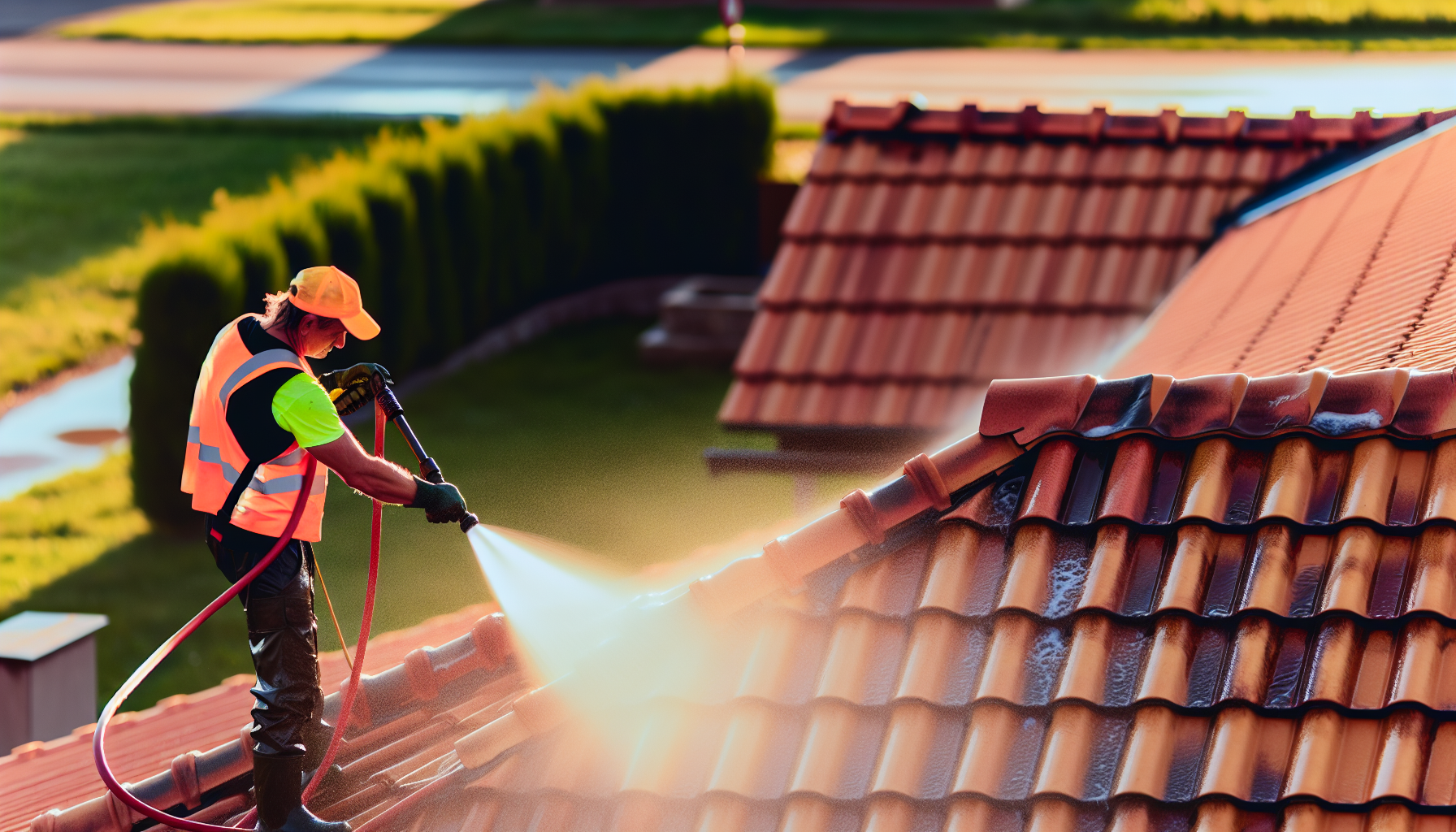
To ensure that no residue from the cleaning solution is left behind, which could potentially harm the shingles, it’s essential to completely wash off your roof as the concluding phase of the cleaning process. Use a garden hose instead of a pressure washer. If you use too much pressure you're greatly increasing the potential for damage.
And there you have it—your roof has been successfully cleaned!
Long-Term Roof Maintenance and Prevention
Maintaining a spotless roof isn’t just about aesthetics. It’s crucial for the structural integrity and life expectancy of your roof. Cleaning a roof is not simply an occasional task to do from time to time, but something you should do each fall and spring.
To prolong your roof’s lifespan through lasting maintenance practices, consider these strategies:
Biannual inspections to detect any deterioration or damage.
Ensure you keep your gutters clean and free from obstructions to avoid water-related damage. Scheduling time and effort today could save you expensive repairs down the line while assuring your roof remains in excellent condition well into the future.
Regular Inspections and Cleaning
Routine inspections of your roof can detect budding issues before they escalate, ultimately saving you the financial burden of hefty repair bills. Conducting at least an annual inspection is suggested to preemptively address smaller complications that could otherwise result in:
Water damage
Leakages
Proliferation of mold, organic material (leaves and twigs), lichen, or moss.
Compromised structural integrity
It’s advisable to employ a professional service for annual or semi-annual roof cleanings as part of your maintenance regimen. This not only helps in early detection but also prevents future issues by utilizing a potent cleaning solution designed specifically for roofs.
Zinc or Copper Strips
Zinc or Copper strips were traditionally used on roofs to prevent the growth of algae and moss, but this practice has become less necessary due to advancements in shingle technology. Many shingle manufacturers now incorporate algae-resistant compounds directly into their products, reducing the need for additional preventive measures. According to Owens Corning, a leading roofing manufacturer, "Owens Corning's patented StreakGuard™ Algae Resistance Protection is a specially formulated inorganic compound that suppresses algae growth on shingles" (Owens Corning, "Algae Resistance Shingle Technology," owenscorning.com). These algae-resistant shingles can effectively inhibit the growth of unsightly black streaks caused by algae, making the installation of separate copper or zinc strips unnecessary for most residential roofing projects. The National Roofing Contractors Association also notes that "Many roofing manufacturers add pesticides, such as zinc, copper, or other biocides, to their shingle coatings to help resist algae growth" (NRCA, "Algae Resistant Shingles," nrca.net).
Keeping Gutters Clear
Investing in a quality gutter system and keeping it well-maintained can provide significant long-term benefits and cost savings for homeowners. A properly functioning gutter system ensures that water is efficiently directed away from the home's foundation, preventing potential damage and erosion. According to the National Association of Home Builders, "Clogged gutters can cause water to seep into the house around windows, doors, and along the roofline, leading to rotting wood and mold problems" (NAHB, "Gutter Maintenance," nahb.org). Additionally, when gutters become clogged or debris-filled, the excess water can overflow and saturate the soil surrounding the foundation, increasing the risk of foundation cracks, settling, and even basement leaks. Neglecting gutter maintenance can also lead to damage to fascia boards, soffits, and siding, as water may accumulate in these areas and cause rot or mold growth. By investing in regular gutter cleaning and inspections, homeowners can avoid costly repairs and extend the lifespan of their home's exterior components, ultimately saving money in the long run (Bob Vila, "The Importance of Gutter Maintenance," bobvila.com).
When to Call in Professionals
While we often encourage the do-it-yourself approach to roof cleaning, there are occasions when enlisting professional assistance becomes necessary:
You have a steep roof and you'd rather not go up there
There's a lot more going on than just an accumulation of organic debris
You have several items you would like a professional's opinion on
You have zero interest in doing the work yourself
Assessing Roof Condition and Damage
Having your roof examined by a professional is an excellent strategy to obtain a precise evaluation of its condition. Early detection of any complications during such inspections can thwart more severe problems, thus saving you from expensive repair work down the line. The inspection process involves looking for various signs that might indicate issues, specifically:
deterioration
destruction
leakages
fissures
watermarks
improper installation (flashing, drip metal, and/or gutters)
To this, inspectors will investigate your attic space for any evidence of moisture presence or structural damage. If the inspection doesn't include a look in the attic, the inspection caught only half the story.
Summary
Cleaning your roof is a crucial part of home maintenance that can save you from major repair costs down the line. By taking the right safety measures, choosing the correct cleaning solution, and following a step-by-step cleaning process, you can keep your roof in top shape. For long-term maintenance, regular inspections and cleaning, installing zinc or copper strips, and keeping your gutters clear can significantly extend your roof’s lifespan. While a DIY approach can work for minor cleaning tasks, don’t hesitate to call in professionals.
Frequently Asked Questions
What is the best cleaner for roof shingles?
To effectively clean shingles on a roof, utilize a solution composed of chlorine bleach and water in equal measurements, applying it through the sprayer attachment of a garden hose. It’s important to steer clear of employing pressure washers as they can harm the shingles.
How do you clean a roof without damaging shingles?
When cleaning a roof to prevent damage to the shingles, it is recommended to apply a mixture consisting of equal parts water and bleach using a garden sprayer. Afterward, gently rinse off the solution with a hose set at low pressure.
Do not use a pressure washer as it may harm your roof.
Should roof shingles be cleaned?
Yes. Most of what we see is an accumulation of leaves, sticks, twigs, and other organic material. The more these accumulate the more potential damage. Think of a pile as a moisture sponge that sits on your roof slowly accumulating water and seeping through your roofing material. Cleaning the roof not only helps prolong the lifespan of the asphalt shingles but also prevents any damage.
What type of cleaning solution should I use?
Based on the cleaning requirements you have, it’s essential to select an appropriate cleaning solution. An eco-friendly choice would be a mixture of vinegar and water, while bleach can tackle more stubborn stains. If your needs differ, you might consider other cleaning agents such as oxygenated bleach or trisodium phosphate on your roof's surface.
Subscribe to Idaho Roofing Contractors's Blog
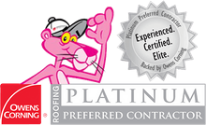

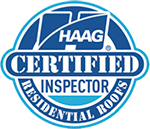

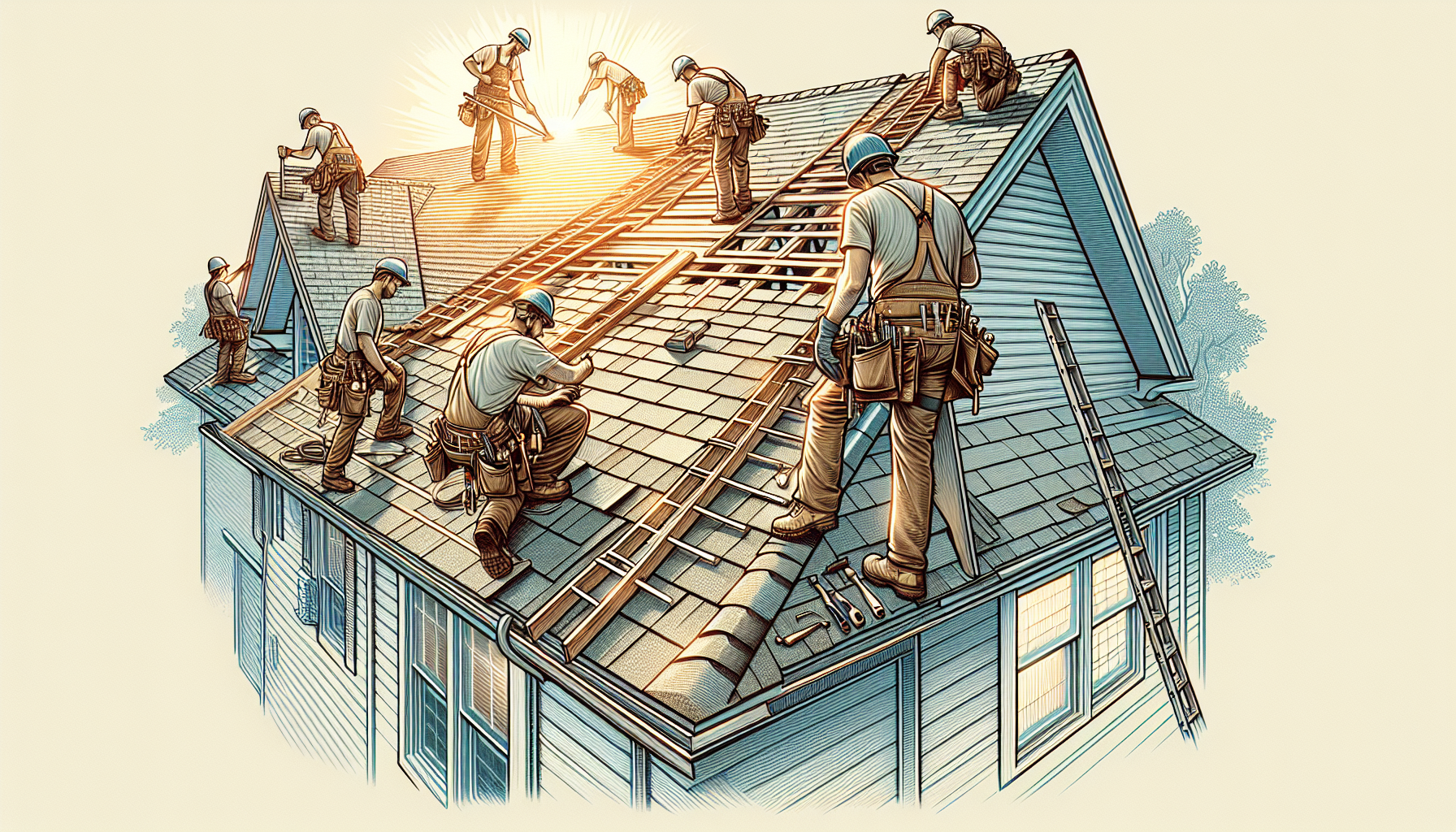


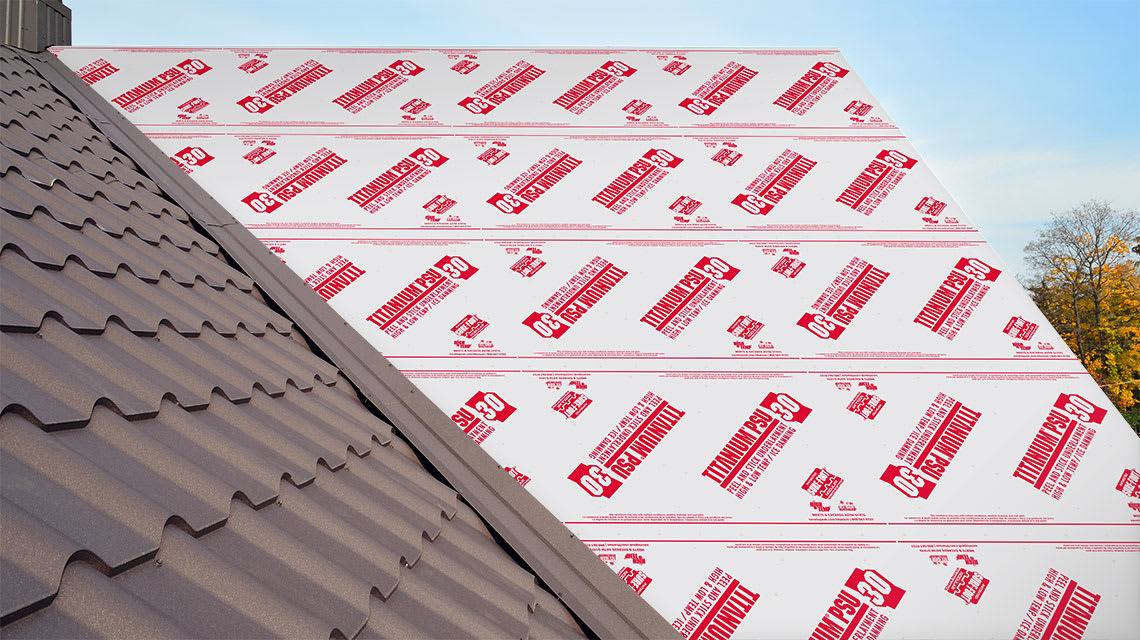
Comments